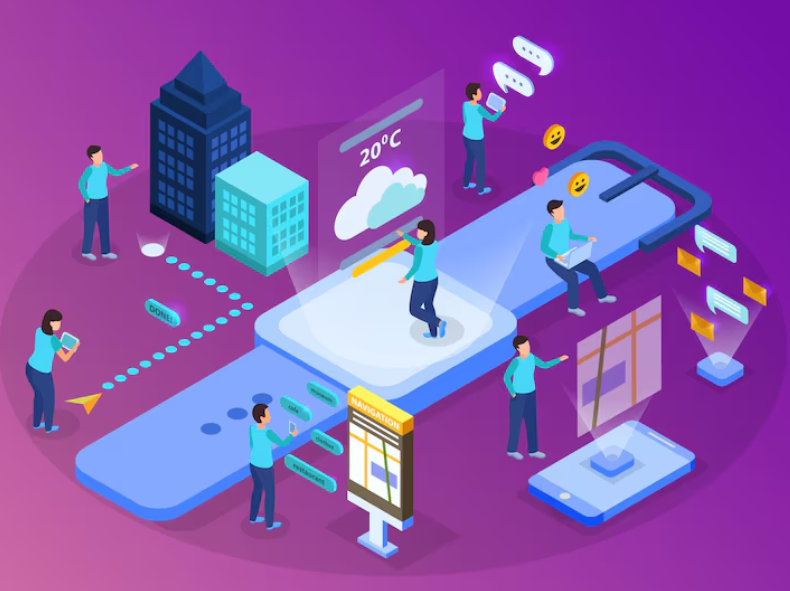In today’s world, people use many types of devices to access the internet. Some people browse websites on powerful laptops. Others use budget smartphones with slow internet connections. To give all users a smooth and fast experience, developers need smart ways to build websites and apps. One important method is called adaptive rendering.
Adaptive rendering is a way to change how a website or app is shown based on the user’s device and internet speed. This helps make sure that even people with slow phones or weak networks can still use the app without problems.
Many students taking full stack developer course are learning about adaptive rendering. It is a modern and practical topic for building better web and mobile experiences.
What is Adaptive Rendering
Adaptive rendering means serving different content, layouts, or features depending on the user’s device and network. This strategy helps apps load faster, use less data, and perform better on all devices.
For example, if someone is using a slow 3G network, the app might load smaller images and turn off animations. If another user is on a fast Wi-Fi network with a high-end phone, the app can show more features and high-quality visuals.
Adaptive rendering focuses on three things:
- Device capabilities (CPU, RAM, screen size)
- Network conditions (Wi-Fi, 4G, 3G, slow or fast)
- User behavior (interaction style, data saving mode)
Why Adaptive Rendering is Important
Not all users have the same devices or internet. If a website only works well on new phones with fast networks, many people will have a bad experience.
Adaptive rendering helps by:
- Making apps faster for slow devices
- Saving mobile data for users with limited plans
- Improving battery life by turning off heavy features
- Increasing user satisfaction and keeping them engaged
In short, adaptive rendering makes apps more inclusive and better for everyone.
How Device Capabilities Affect Rendering
Different devices have different power. Some have fast processors and large screens. Others are slower and smaller. Adaptive rendering checks the device and changes the app to match.
Here are some things apps can check:
Screen Size and Resolution
- Show a full menu on large screens
- Use a hamburger icon on small screens
- Use smaller images on low-resolution displays
Memory and CPU Power
- Turn off animations on low-end phones
- Use simple layouts for faster rendering
- Avoid complex JavaScript on slow devices
Battery Level
- Reduce background tasks when the battery is low
- Pause animations and videos to save power
By detecting these features, apps can run more smoothly on all kinds of devices.
How Network Conditions Affect Rendering
Network speed and quality also matter a lot. Someone on a fast Wi-Fi connection can load large images and videos quickly. But someone on a slow 3G or 2G network may wait a long time or give up.
Apps can adapt to network conditions using the Network Information API in modern browsers or mobile SDKs. This lets apps do things like:
Reduce Data Usage
- Load low-resolution images or videos
- Use text instead of pictures
- Avoid auto-playing media
Show Offline Content
- Use cached data when there is no connection
- Show a message saying “You are offline” with basic features
Delay Non-Critical Content
- Load important content first
- Load extras (like ads or animations) after everything else
All of these strategies help users on slow or unstable connections have a better experience.
Strategies for Adaptive Rendering
There are several common strategies developers use to build adaptive experiences. Here are the main ones:
1. Client-Side Adaptation
In this method, the browser or device makes decisions. JavaScript detects the screen size, network type, or device memory, and then changes the layout or content.
Pros:
- Works well for modern browsers
- Easy to test on different devices
Cons:
- Can take time to load the full app before adapting
- Doesn’t help much if the device is too slow to run JavaScript
2. Server-Side Adaptation
Here, the server checks user-agent headers or other information before sending anything. It can send a light version of the app for slow devices or networks.
Pros:
- Faster first load
- Saves data and processing on the client
Cons:
- Hard to detect all devices correctly
- Might need more backend code
3. Responsive Design with Media Queries
This is a design approach that uses CSS to alter the layout based on screen size. For example, you can hide or move elements when the screen is small.
Pros:
- Easy to set up with CSS
- No need for extra code
Cons:
- Doesn’t adapt to network speed or CPU
- Mostly useful for layout, not content changes
4. Progressive Enhancement
Begin with a simple version of the app that works everywhere. Then add advanced features for devices that support them.
Pros:
- Works on old and new devices
- Good user experience for everyone
Cons:
- Takes planning and extra work
- Some features may not be available to all users
5. Lazy Loading
Load only what the user needs right now. Other parts are loaded as they scroll or interact.
Pros:
- Saves data
- Speeds up initial load
Cons:
- Needs careful testing
- May delay user actions if done wrong
Tools and APIs for Adaptive Rendering
Here are some tools and technologies developers can use for adaptive rendering:
- Network Information API: Tells you if the connection is 3G, 4G, or Wi-Fi
- Device Memory API: Shows how much RAM the device has
- User-Agent Header: Helps detect device type on the server
- Media Queries: CSS rules for screen size and resolution
- Lighthouse: A Google tool to test performance on different network and device types
- Service Workers: Helps cache data and handle offline access
By combining these tools, developers can create smart apps that adapt in real time.
Real World Examples
YouTube
YouTube adjusts video quality based on the user’s internet speed. It also pauses background playback to save battery and data.
Facebook Lite is a slightly modified version of the app made for low-end phones and slow networks. It loads quickly and uses less data.
Twitter uses progressive enhancement. It shows tweets quickly and loads images later. On slow networks, it switches to lower-quality images.
Google Search
Google Search loads a lightweight version of the site when it detects a slow connection. It shows fewer graphics and more plain text.
These companies use adaptive rendering to make sure all users have a good experience, no matter their device or connection.
Best Practices for Developers
To use adaptive rendering well, follow these simple tips:
- Always test your app on different devices and networks
- Don’t assume all users have fast phones or fast internet
- Use tools like Chrome DevTools to simulate slow conditions
- Start simple, then add advanced features if supported
- Let users choose if they want to save data or load faster
By following these steps, developers can build more useful and friendly apps.
Conclusion
Adaptive rendering is a smart way to make websites and apps work well for everyone. It adjusts the content and layout based on the user’s device and network conditions. This helps create faster, more reliable, and more inclusive digital experiences.
As more users go online from mobile devices and low-bandwidth areas, adaptive rendering is becoming a must-have skill. That is why modern programs like a full stack developer course in Hyderabad include topics like adaptive strategies, performance optimization, and user experience across devices.
Learning how to build adaptable and responsive apps will help developers stand out and create better experiences for all kinds of users.
Contact Us:
Name: ExcelR – Full Stack Developer Course in Hyderabad
Address: Unispace Building, 4th-floor Plot No.47 48,49, 2, Street Number 1, Patrika Nagar, Madhapur, Hyderabad, Telangana 500081
Phone: 087924 83183

